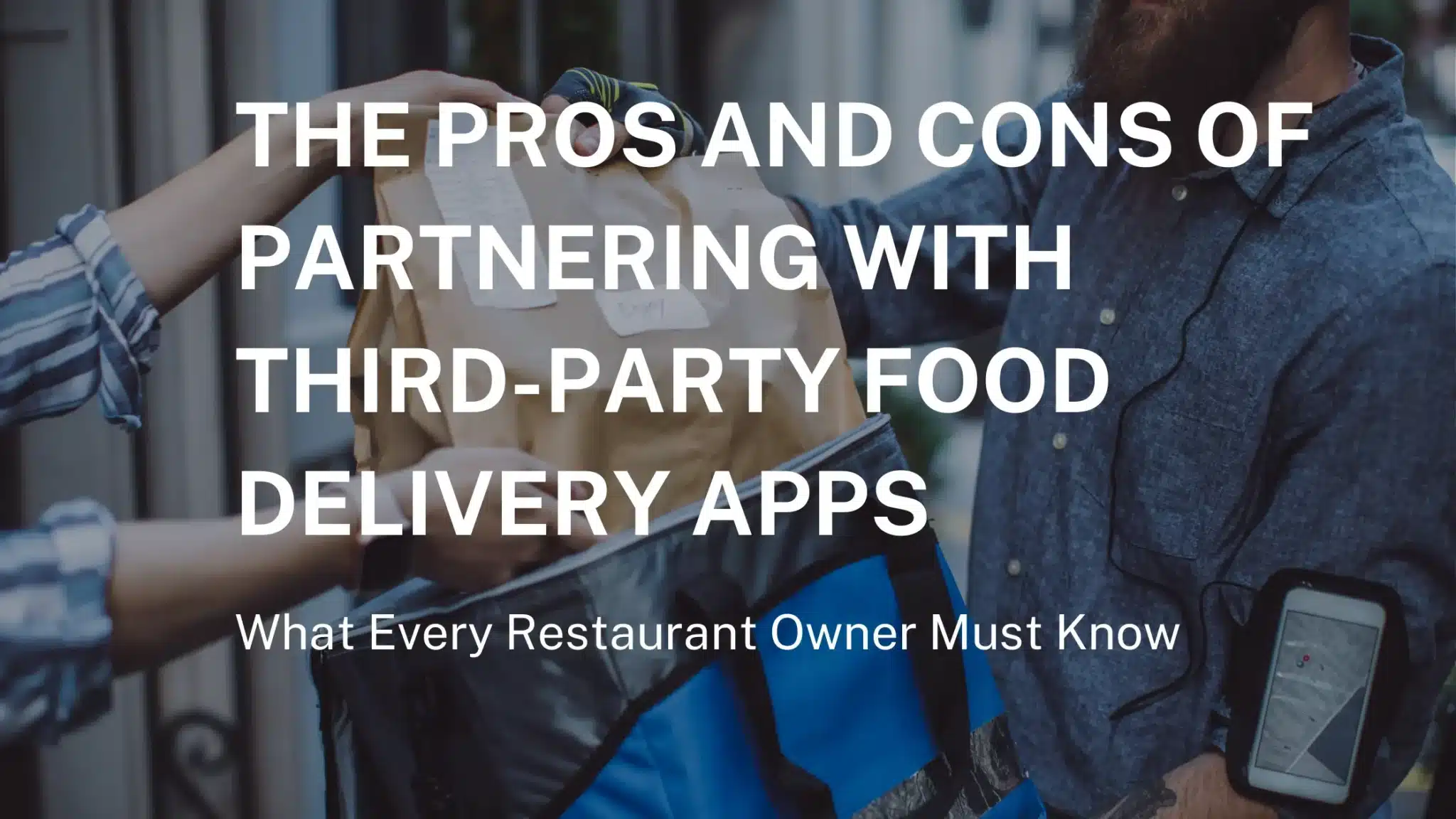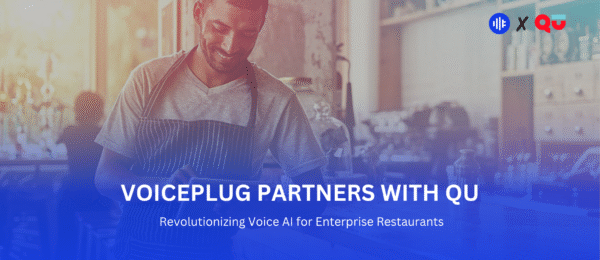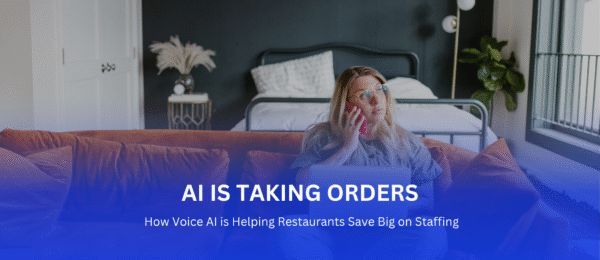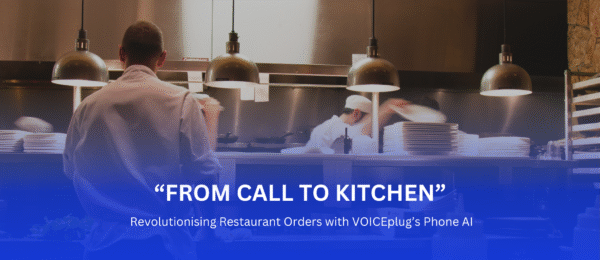VoicePlug’s conversational AI now integrated with Qu to enable intuitive voice ordering across phones and drive-thrus.Palo Alto, CA…
Learn More
The Pros and Cons of Partnering with Third-Party Food Delivery Apps
Advantages of Using 3rd-Party Food Delivery Apps
As a restaurant operator or manager, you’re always looking for ways to boost your revenue and reach new customers. That’s where third-party food delivery apps come in. These platforms can be a game-changer for your business, offering a range of benefits that can help you grow and succeed in today’s competitive market.
Increased Revenue Potential
One of the biggest advantages of using third-party food delivery apps is the potential to increase your restaurant’s revenue. By partnering with these platforms, you can tap into a whole new customer base that may not have otherwise known about or visited your establishment. The convenience of ordering through an app can also encourage repeat business and boost customer loyalty.
Think about it: with just a few taps on their smartphone, hungry customers can browse your menu, place an order, and have your delicious food delivered right to their doorstep. It’s a win-win situation – they get to enjoy your culinary creations, and you get to expand your reach and grow your business.
Streamlined Delivery Operations
Another major benefit of using third-party food delivery apps is the streamlined delivery process they offer. These platforms typically have their fleet of delivery drivers, which means you don’t have to worry about hiring and managing your delivery staff. This can save you time, money, and headaches in the long run.
By outsourcing your delivery operations to a third-party app, you can focus on what you do best – creating amazing food and providing top-notch service to your dine-in customers. Let the delivery experts handle the logistics of getting your food to your customers’ doors quickly and efficiently.
Boosted Brand Exposure and Marketing
Finally, partnering with third-party food delivery apps can give your restaurant a serious boost in terms of brand exposure and marketing. These platforms often have extensive marketing strategies and large user bases, which means your restaurant can benefit from increased visibility and reach.
For smaller, mid-size, or independent restaurants that may not have the resources to invest in extensive marketing campaigns, this can be a game-changer. By leveraging the marketing power of these apps, you can get your name out there and attract new customers who may not have otherwise discovered your restaurant.
Disadvantages of Using 3rd Party Food Delivery Apps
While there are certainly benefits to using third-party food delivery apps, it’s important to also consider the potential drawbacks. As a restaurant operator or manager, you need to weigh these disadvantages carefully before deciding whether these platforms are right for your business.
High Commission Fees Can Eat into Your Profits
One of the biggest downsides of using third-party food delivery apps is the high commission fees they charge. These fees can range from 30~35% of the order value, which can take a significant bite out of your profits. For small, independent restaurants or even mid-size restaurant chains with already tight margins, this can be a major challenge.
Before signing up with a delivery app, make sure you crunch the numbers and understand how these fees will impact your bottom line. You may need to adjust your menu prices or find other ways to offset these costs to maintain profitability.
Loss of Control Over the Customer Experience
Another potential disadvantage of using third-party food delivery apps is the loss of control over the customer experience. When you hand off the delivery process to a third-party platform, you’re essentially entrusting them with your brand reputation. If the delivery driver is late, or unprofessional, or the food arrives cold or damaged, it reflects poorly on your restaurant – even though it’s out of your control.
To mitigate this risk, it’s important to choose a reputable delivery partner and communicate your expectations for service and quality. You may also want to consider investing in specially designed packaging to ensure your food arrives in the best possible condition.
Dependency on Third-Party Platforms
Finally, relying too heavily on third-party food delivery apps can create a dependency that leaves your restaurant vulnerable. If the app suddenly changes its policies, raises its fees, or goes out of business altogether, it could have a significant impact on your revenue stream.
To protect your business, it’s wise to diversify your sales channels and not put all your eggs in one basket. Consider developing your online ordering system and implementing AI Phone Answering System offering in-house delivery or partnering with multiple delivery platforms to spread out the risk.
Customer Data and Loyalty
While third-party delivery apps provide access to more customers, restaurants often lack control over customer data and relationships. The delivery app, not the restaurant, owns customer information and the primary customer connection. This means restaurants are dependent on the app for repeat business. If a restaurant’s listing becomes less prominent on the app, that can directly lead to lost repeat orders. The restaurant has no way to reach those customers independently. Essentially, third-party delivery apps retain ownership of the customer data and experience, making it very difficult for restaurants to build lasting customer loyalty outside the app. This data ownership imbalance is a significant disadvantage for restaurant owners to consider when partnering with these platforms.
Potential for Market Saturation and Competition
As more and more restaurants jump on the third-party delivery bandwagon, the market can quickly become saturated. This increased competition can make it harder for your restaurant to stand out and attract customers on these platforms.
To combat this, focus on creating a unique and compelling brand identity that sets you apart from the crowd. Invest in high-quality photos, enticing descriptions, and targeted promotions to grab attention and entice customers to choose your restaurant over others.
Impact on the Restaurant Industry
The rise of third-party food delivery apps has had a significant impact on the restaurant industry as a whole. While these platforms have brought new opportunities for growth and revenue, they’ve also introduced new challenges and concerns for restaurant operators and managers.
This is especially faced in areas with a high concentration of restaurants, like college towns, Office centers, or busy urban/ shopping centers. To stay competitive, you may need to:
- Optimize your menu for delivery
- Offer promotions or discounts through the apps
- Invest in high-quality packaging to ensure your food arrives fresh and intact
- Adjusting your menu prices to account for the commission fees
- Offering a simplified delivery menu with higher-margin items
- Encouraging customers to order directly from your website, app or phone when possible
Finally, the shift in consumer behavior towards delivery and takeout has led some restaurants to rethink their overall business model. With more customers opting for the convenience of delivery, you may need to adapt your operations to prioritize off-premise dining. This could involve:
- Redesigning your kitchen layout to optimize for delivery and takeout orders
- Investing in technology solutions to streamline your delivery operations
- Rethinking your staffing model to ensure you have enough team members dedicated to handling delivery orders
By staying agile and adapting to the needs and preferences of your customers, you can continue to grow and thrive in the age of third-party food delivery apps.
Operational Integration and Flexibility
When it comes to using third-party food delivery apps, operational integration and flexibility are key considerations for your restaurant. You want to ensure that these platforms seamlessly integrate with your existing systems and processes, allowing you to efficiently manage orders and maintain a smooth workflow.
One potential challenge you may face is integrating these apps with your Point of Sale (POS) system. While some restaurants have successfully integrated third-party services with POS systems, others have encountered difficulties. If the integration isn’t seamless, you may find yourself manually entering orders, which can increase the risk of errors and lead to operational inefficiencies. It’s crucial to carefully evaluate the compatibility of these apps with your existing technology stack to avoid any headaches down the line.
Another aspect to consider is the ability to toggle delivery services on and off as needed. This flexibility can be a lifesaver during peak hours when your restaurant is already bustling with dine-in customers. By pausing your delivery services during these times, you can prevent your kitchen from becoming overwhelmed and ensure that your in-house guests receive the attention and quality they deserve. However, this requires active management and communication with your staff to ensure everyone is on the same page.
Strategic and Financial Considerations
When it comes to deciding whether or not to use third-party food delivery apps, there are some important strategic and financial factors to consider. One of the biggest concerns is the impact these apps can have on your restaurant’s profitability and overall business model. The high commission fees charged by these platforms can significantly impact your profit margins.
Another key consideration is the potential impact on customer acquisition and retention. While third-party apps can certainly help you reach new customers, it’s important to ask yourself whether these customers are likely to become loyal, repeat patrons. Some restaurant owners have found that customers acquired through these apps rarely convert into direct, long-term customers. This means you could be paying a continuous acquisition cost without seeing the long-term value of customer retention.
Finally, it’s crucial to consider your pricing strategy when using third-party food delivery apps. Some restaurants choose to set higher prices on delivery platforms than for in-store or direct online orders, but this could potentially alienate price-sensitive customers if not communicated clearly.
Alternative Solutions and Best Practices
While third-party food delivery apps have their advantages, they may not be the right fit for every restaurant. If you’re looking for ways to mitigate the drawbacks of these platforms, consider exploring these alternative solutions and best practices:
Implement Your Own Direct Ordering System
One effective way to avoid the high fees associated with third-party apps is to establish your own in-house online ordering system. By creating a user-friendly website or mobile app or using AI Phone ordering system you can encourage customers to place orders directly with your restaurant. This approach not only helps you save on commission fees but also allows you to foster direct relationships with your customers.
To incentivize direct ordering, consider implementing a loyalty program that rewards customers for their repeat business. Offer & communicate exclusive discounts, promotions, or personalized offers to keep them coming back to your restaurant’s own ordering channels.
Treat App Fees as a Marketing Expense
If you decide to use third-party food delivery apps, try viewing their fees as a marketing expense rather than a direct cost. In competitive markets like college towns, these platforms can be a valuable tool for increasing your restaurant’s visibility and attracting new customers.
By allocating a portion of your marketing budget to cover the app fees, you can justify the expense as a means of boosting brand awareness and reaching a wider audience. Just be sure to track your return on investment and adjust your strategy as needed to ensure you’re getting the most bang for your buck.
Optimize Your Operations for Delivery Success
To make the most of third-party food delivery apps, it’s crucial to adapt your restaurant’s operations to ensure profitability and efficiency. Start by reviewing your menu and making strategic adjustments to prioritize items that travel well and maintain their quality during delivery.
Consider implementing a separate prep line or designated kitchen staff to handle delivery orders, minimizing disruptions to your dine-in service. Integrate your point-of-sale (POS) system with the delivery apps to streamline order processing and reduce the risk of errors.
Communicate Clearly with Your Customers
Transparency is key when it comes to using third-party food delivery apps. Be upfront with your customers about any price differences between in-store and delivery menu items. Explain that these adjustments are necessary to offset the app fees and maintain your restaurant’s profitability, all while encouraging customers to order directly instead of these apps.
Continuously Evaluate and Adapt Your Strategy
The world of third-party food delivery apps is constantly evolving, so it’s essential to stay agile and adaptable. Regularly assess the performance of your delivery operations, analyzing metrics like order volume, customer feedback, and profitability.
Be open to trying new approaches and making adjustments as needed. If you find that a particular app isn’t working well for your restaurant, don’t be afraid to explore other options or shift your focus to alternative solutions like direct ordering. By continuously evaluating and refining your strategy, you can find the right balance that works for your unique business needs.
Conclusion
As a restaurant operator or manager, you have a lot to consider when it comes to partnering with third-party food delivery apps. While these platforms can offer significant benefits like increased revenue potential, streamlined delivery operations, and boosted brand exposure, they also come with potential drawbacks such as high commission fees, limited control over the customer experience, and the risk of becoming overly dependent on these apps.
Ultimately, the decision to use third-party food delivery apps will depend on your unique business goals, target audience, and financial situation. It’s essential to carefully weigh the pros and cons and consider alternative solutions like implementing Voice AI for Restaurants, online ordering system, or partnering with local delivery services.
If you do decide to work with third-party apps, be strategic about which platforms you choose and how you integrate them into your overall business strategy.
At the end of the day, the key is to stay focused on what matters most – providing high-quality food and exceptional service to your customers, whether they’re dining in or ordering delivery. By keeping this goal at the forefront of your decision-making process, you’ll be well-positioned to succeed in today’s rapidly evolving restaurant industry.
VoicePlug’s Phone AI solution for medium-sized restaurant chains helps improve customer experience, boosting revenue and increasing operating margins. With a remarkable 99% call-to-order conversion rate and more than 98.9% accuracy in orders, Phone AI technology not only minimizes front-of-house staff burnout but also improves staff retention and satisfaction. Compatible with over 50+ online ordering platforms, POS, loyalty and marketing automation systems, and payment gateways, VoicePlug’s Phone AI streamlines operations seamlessly. To know more about VOICEplug AI applications and benefits, reach out to us – contact@voiceplug.ai
Articles you might like
“We have more calls nowadays because people find it easier to place their orders. I think that’s the…
Learn MoreRestaurant businesses operate in a fast-paced culinary landscape, and efficiency and customer satisfaction are paramount for multi-location restaurants….
Learn More



